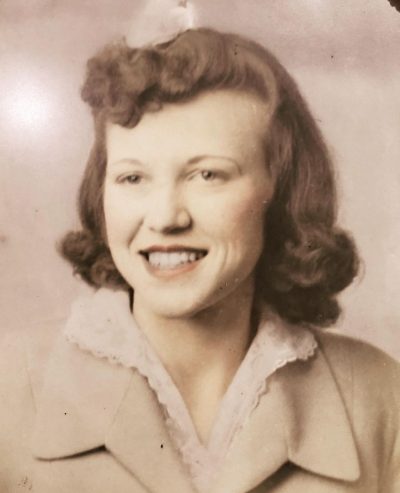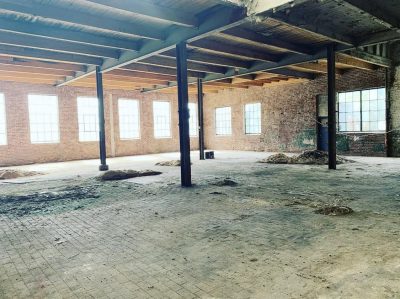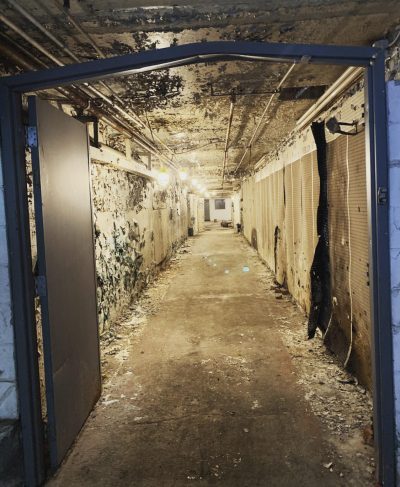 My great grandmother, Laura Elizabeth, has always been at the center of family lore. She was beautiful, like you can’t look at a picture of her too long or your eyeballs hurt beautiful. She was a tragic warning, dying at 32 from mostly untreated ovarian cancer that spread throughout her body. She was a mother of four and the ultimate example of otherworldly maternal love, unable to rest on the other side until she appeared to my great aunt in spirit form after her death to comfort her.
My great grandmother, Laura Elizabeth, has always been at the center of family lore. She was beautiful, like you can’t look at a picture of her too long or your eyeballs hurt beautiful. She was a tragic warning, dying at 32 from mostly untreated ovarian cancer that spread throughout her body. She was a mother of four and the ultimate example of otherworldly maternal love, unable to rest on the other side until she appeared to my great aunt in spirit form after her death to comfort her.
Growing up, these were the main things drilled into my head over and over, but one of her most impressive feats, at least to me, usually got glossed over. In the late 1940s, when my nana was only four-years-old, Laura Elizabeth divorced an abusive husband, got full custody of my nana, and went to work full time at Kern’s Bakery in South Knoxville.
 When I was younger, it didn’t seem quite as impressive to imagine her as a newly divorced woman working at a bread factory. Mostly everyone I knew had divorced parents, after all. I wanted to hear more about visions of her in a purple gown, smelling sweet, and visiting her daughter from beyond the grave. It wasn’t until I was older that I really started to grasp the magnitude of what she had done during her life. By 32, I found myself twice divorced, each split fracturing my heart and my wallet, uprooting my comfort and my children, and leaving me, a college educated middle class woman in the 21st century wondering what in the world I was going to do to support my family. I cannot imagine the courage it took for a woman over 60 years ago, in a different time entirely, to cut ties and move forward to a new, better life, when so many women stayed in relationships like hers…
When I was younger, it didn’t seem quite as impressive to imagine her as a newly divorced woman working at a bread factory. Mostly everyone I knew had divorced parents, after all. I wanted to hear more about visions of her in a purple gown, smelling sweet, and visiting her daughter from beyond the grave. It wasn’t until I was older that I really started to grasp the magnitude of what she had done during her life. By 32, I found myself twice divorced, each split fracturing my heart and my wallet, uprooting my comfort and my children, and leaving me, a college educated middle class woman in the 21st century wondering what in the world I was going to do to support my family. I cannot imagine the courage it took for a woman over 60 years ago, in a different time entirely, to cut ties and move forward to a new, better life, when so many women stayed in relationships like hers…
In 1876, Peter Kern opened the first Kern’s Bakery in the building that now houses the Peter Kern Library and The Oliver Hotel in Market Square. After his death, the family operated it for a time, eventually selling it, and the new owners built the present day facility and South Knoxville landmark in 1931 where it operated into the early 2000s. Nearly everyone I know, young and old, has some sort or memory or tie to the bakery, either working there, knowing someone who did, or riding the carousel as a child at a birthday party. So, in 2019, when word started to spread that someone had taken ownership of the building, I was admittedly less than thrilled.
Spending my college years in Nashville, I am still pretty connected to the city and have spent years watching in horror from behind a computer screen as friends share news of one more historical building being acquired, torn down, and turned into a high-rise condo complex. Unable to find immediate news of the plans for Kern’s, I assumed it would meet that same fate. With its 16 acre level lot and the proximity to UT stadium, it would be a perfect candidate for a parking garage. I Googled relentlessly and asked anyone I knew what, if anything, they had heard. Rumors ran the gamut from condos, to retail, to parking lot, and back again. Someone said something about a food hall. I didn’t know what that was, and like the true fatalist I am, continued to assume the worst.
Why did I care so much about a building I had never seen the inside of?
My only real draw to it being a woman I never knew, whose infamy blanketed my family, causing every female member to hold her breath around the age of 32, remembering that if they survived that year, they would have outlived her. But I did care. A lot. In the coming months, I poured over every article or news story I could find. “They’re keeping the building. They’re making a food hall. They’re delaying opening until 2022,” I would parrot anytime Kern’s was brought up in conversation, as if I were the one in charge of it all.
Two questions still plagued me: what even is a food hall and what are they going to do to the building?
Pulling up to Kern’s a few weeks ago, I was filled with nervous energy somewhere between going on a first date and awaiting test results from a medical procedure. On the one hand, I was about to get a solo tour of a place I have always wanted to gain access to. On the other, I was tamping down the frantic urge to yell ‘BUT WHAT ABOUT THE BUILDING?!” like an activist about to chain herself to a tree or a bulldozer, filled with anxiety about the answers to my question. When I arrived at the front, I was greeted by Cooper, the big dog, and Timothy Martin of TMA Real Estate, who was acting as the liaison between the new owners, the businesses vying for stalls, and curious people like me who wanted to wander around a building so intertwined in South Knoxville’s history. He gave me a bread scented candle, specially designed for the new concept, and I bit my lower lip, reminding myself all the while, “You cannot lecture a stranger on what to do with a space you have no claim to,” and “If your mouth doesn’t say it your face will, so even if you have to bite a hole in your jaw to control it, do not (as southern women like to say) pull a face.”
What happened in the next hour was balm to a business owning, SoKno living, history nerd’s weary heart.
Kern’s Food Hall is a concept I have never heard of, but didn’t know how desperately I wanted. A food hall essentially, is an open, indoor space with businesses renting out stalls (aka spaces of a few hundred square feet), to operate. Most all businesses are food-centric (because food hall) but a few specialty retailers will have stalls as well. The food offerings are a mix of local and artisan, running the gamut from coffee to doughnuts to Mexican to sandwiches, to Italian; more of a boutique experience, but not so “out there” that we will all be wandering around trying to pronounce a made up word for pizza.
There are a few huge spaces that give a true “store within a store” vibe to be rented out, some wellness businesses and a production studio in talks to be headquartered there. A distillery is looking at taking over the huge, open room that used to house the delivery trucks. And with the proximity to Ijams and bike trails of the Urban Wilderness, a few local outfitter companies are in talks for a ground-level space to rent outdoor equipment. There will be bars, a room to rent for private parties and events, a flower truck, indoor and outdoor seating, restrooms, and a concert/event stage. Outside, there will be patios, both rooftop and regular, with community events planned like movies on the side of the bakery’s exterior via Jumbotron. The space will be kid and dog friendly, touted as a place you can meet for drinks before a girls’ night or a place you can bring the family to spend the day on the lawn. Just up the hill, overlooking it all, are fully furnished apartments and in the coming years, a hotel will open on the other side of the building.
This all sounded really great, and I was incredibly excited, but the burning question still lingered: what will the building look like?
Silently ruminating over this, Tim led me past an old switchboard and into a dark room, telling me to look at the floor the whole time until he told me to look up. I did as instructed and slowly traced my eyes up for what seemed like forever. “It’s the grain silos!,” I screamed while clapping my hands like a trained seal and jumping up and down. (I told y’all, I really love old buildings.) Somewhere in the middle of my industrial storage container induced hysteria, Tim told me they loved the space and wanted to preserve and repurpose as much of it as they possibly could; that this building, and all it meant to Knoxville, meant a lot to the developers too.
Finally my answer.
 I wanted to fast forward time to 2022. I wanted to stand in that same spot, blink my eyes, and be standing right in the middle of it all. But, on the contrary, I didn’t want to leave.
I wanted to fast forward time to 2022. I wanted to stand in that same spot, blink my eyes, and be standing right in the middle of it all. But, on the contrary, I didn’t want to leave.
As we walked around to every space and to every floor (there are three in total), I tried my hardest to be mentally three places at once.
I was listening to Tim explain what this would be in the course of a year, I was taking in this space as it is presently — still largely untouched and raw, much like it had been since its conception in 1931 — savoring every second and knowing the magnitude of likely never seeing it in this state again, and with every step, every new space revealed, wondering what it was like when my great grandmother was here…wondering if I was standing where she stood once…wondering if she had friends here, if she felt strong here, wondering if she somehow knew that I wear her wedding band every day, a wedding band from her second and happy marriage. A marriage cut short by a disease that forever cemented her in our family history; a death and a life my nana tried so hard to pass onto us so that her beloved mother would never be forgotten.
 On first pass to the basement via a hallway, I tried to snap a quick photo, but Cooper was in every shot. I let it go and told myself I had plenty of pictures, but as we edged closer to the exit at the close of my tour, a voice inside my head was screaming to go back there. I asked for one more shot of the hallway looking down and Tim obliged. As I stood on the top of the ramp, alone with my camera trying to frame the perfect shot, little dots of light penetrated the frame. I moved my phone a few times, thinking maybe light from the windows along the side wall was the culprit, but they remained. I moved my phone again, looking with my naked eye at what was causing the glare and saw nothing. I walked further down the ramp, the side walls of the structure itself now blocking all the windows from the main floor, positioned my phone, and the glowing dots were back. No matter where I moved the phone, they followed. I took a picture and looked again, nothing there. Cooper whined from the top of the ramp and I smiled, turned to leave, and mouthed “bye,” in the general direction of where the lights were.
On first pass to the basement via a hallway, I tried to snap a quick photo, but Cooper was in every shot. I let it go and told myself I had plenty of pictures, but as we edged closer to the exit at the close of my tour, a voice inside my head was screaming to go back there. I asked for one more shot of the hallway looking down and Tim obliged. As I stood on the top of the ramp, alone with my camera trying to frame the perfect shot, little dots of light penetrated the frame. I moved my phone a few times, thinking maybe light from the windows along the side wall was the culprit, but they remained. I moved my phone again, looking with my naked eye at what was causing the glare and saw nothing. I walked further down the ramp, the side walls of the structure itself now blocking all the windows from the main floor, positioned my phone, and the glowing dots were back. No matter where I moved the phone, they followed. I took a picture and looked again, nothing there. Cooper whined from the top of the ramp and I smiled, turned to leave, and mouthed “bye,” in the general direction of where the lights were. 



















